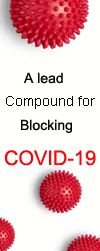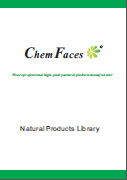
| 产品编号 | CFN94478 | |
| CAS编号 | 501-30-4 | |
| 分子式 = 分子量 | C6H6O4 = 142.11 | |
| 产品纯度 | >=98% | |
| 物理属性 | Powder | |
| 化合物类型 | Miscellaneous | |
| 植物来源 | From the Aspergillus parasiticus. | |
| ChemFaces的产品在影响因子大于5的优秀和顶级科学期刊中被引用 | ||
| 产品名称 | 产品编号 | CAS编号 | 包装 | QQ客服 |
| 曲酸 | CFN94478 | 501-30-4 | 10mg | QQ客服:1413575084 |
| 曲酸 | CFN94478 | 501-30-4 | 20mg | QQ客服:1413575084 |
| 曲酸 | CFN94478 | 501-30-4 | 50mg | QQ客服:1413575084 |
| 曲酸 | CFN94478 | 501-30-4 | 100mg | QQ客服:1413575084 |
 Cell. 2018 Jan 11;172(1-2):249-261.e12. doi: 10.1016/j.cell.2017.12.019.IF=36.216(2019)
Cell. 2018 Jan 11;172(1-2):249-261.e12. doi: 10.1016/j.cell.2017.12.019.IF=36.216(2019) Cell Metab. 2020 Mar 3;31(3):534-548.e5. doi: 10.1016/j.cmet.2020.01.002.IF=22.415(2019)
Cell Metab. 2020 Mar 3;31(3):534-548.e5. doi: 10.1016/j.cmet.2020.01.002.IF=22.415(2019) Mol Cell. 2017 Nov 16;68(4):673-685.e6. doi: 10.1016/j.molcel.2017.10.022.IF=14.548(2019)
Mol Cell. 2017 Nov 16;68(4):673-685.e6. doi: 10.1016/j.molcel.2017.10.022.IF=14.548(2019)| Description: | Kojic acid has been used as a food additive for preventing enzymatic browning of crustaceans and as a cosmetic agent for skin whitening. Kojic acid exhibits concentration-dependent scavenging activity on DPPH possessing strong antioxidant activity, it can reduce the mortality induced by gamma irradiation; it exhibits a competitive inhibition for the oxidation of chlorogenic acid and catechol by potato polyphenol oxidase (PPO) and of 4-methylcatechol and chlorogenic acid by apple PPO; it also has significant tyrosinase inhibitory activity. | |||
| Targets: | Tyrosinase | |||
| In vitro: |
| |||
| In vivo: |
|
| 1 mg | 5 mg | 10 mg | 20 mg | 25 mg | |
| 1 mM | 7.0368 mL | 35.184 mL | 70.368 mL | 140.736 mL | 175.9201 mL |
| 5 mM | 1.4074 mL | 7.0368 mL | 14.0736 mL | 28.1472 mL | 35.184 mL |
| 10 mM | 0.7037 mL | 3.5184 mL | 7.0368 mL | 14.0736 mL | 17.592 mL |
| 50 mM | 0.1407 mL | 0.7037 mL | 1.4074 mL | 2.8147 mL | 3.5184 mL |
| 100 mM | 0.0704 mL | 0.3518 mL | 0.7037 mL | 1.4074 mL | 1.7592 mL |
| 产品名称 | 产品编号 | CAS编号 | 分子式 = 分子量 | 位单 | 联系QQ |
| 曲酸; Kojic acid | CFN94478 | 501-30-4 | C6H6O4 = 142.11 | 20mg | QQ客服:1457312923 |
| 白屈菜酸; Chelidonic acid | CFN94111 | 99-32-1 | C7H4O6 = 184.10 | 20mg | QQ客服:3257982914 |
| 去甲氧基茵陈色原酮; Demethoxycapillarisin | CFN97716 | 61854-36-2 | C15H10O6 = 286.24 | 5mg | QQ客服:3257982914 |
| 7-O-去甲氧基茵陈色原酮; Demethoxy-7-O-methylcapillarisin | CFN96209 | 61854-37-3 | C16H12O6 = 300.3 | 5mg | QQ客服:2159513211 |
| 茵陈色原酮; Capillarisin | CFN90317 | 56365-38-9 | C16H12O7 = 316.26 | 5mg | QQ客服:1457312923 |
| Epimedonin B; Epimedonin B | CFN92907 | 1616061-69-8 | C20H16O6 = 352.34 | 5mg | QQ客服:2159513211 |
| 5,7-二羟基色原酮; 5,7-Dihydroxychromone | CFN97761 | 31721-94-5 | C9H6O4 = 178.14 | 20mg | QQ客服:2159513211 |
| 5,7-二羟基色原酮 7-芸香糖苷; 5,7-Dihydroxychromone 7-rutinoside | CFN92369 | 52538-46-2 | C21H26O13 = 486.4 | 5mg | QQ客服:1457312923 |
| 3,5,7-三羟基色原酮; 3,5,7-Trihydroxychromone | CFN89191 | 31721-95-6 | C9H6O5 = 194.14 | 5mg | QQ客服:2056216494 |
| Eriosematin A; Eriosematin A | CFN92552 | 175448-02-9 | C14H14O4 = 246.3 | 5mg | QQ客服:1413575084 |


